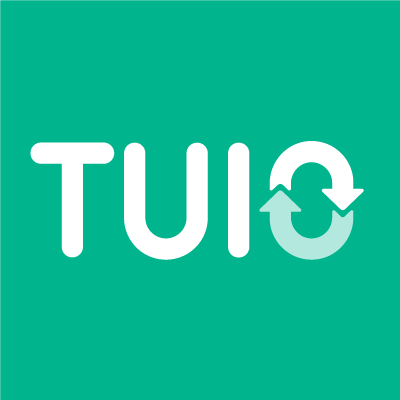The Silent Revolution: Reimagining Educational Marketing in the 21st Century
The education sector is experiencing a seismic shift. The era of generic marketing campaigns and passive information sharing is over. Today’s parents seek more than just information—they yearn for meaningful connections, authentic experiences, and a deep understanding of their child’s unique needs and aspirations.
This change demands a revolutionary approach to educational marketing, one that transcends traditional methods and delves into the emotional and psychological intricacies of parental decision-making.
In this guide, we’ll explore the core principles of a parent-centric marketing strategy, equipping school leaders with the tools to create engaging brand ecosystems that attract, inspire, and retain families.
Unlock the Ultimate Guide to Smarter Tuition Management
Get expert insights on streamlining enrollment, automating payments, and enhancing parent engagement—all in one easy-to-read guide.
The Shifting Landscape of Parent Expectations
In the past, choosing a school was a simpler process. Parents relied on brochures, open houses, and word of mouth, often basing their decisions on convenience or reputation. But today’s parents are more informed, engaged, and intentional in their choices, expecting a holistic educational experience for their children.
Consider Maria Rodriguez, a tech professional in San Francisco. For her, selecting a school isn’t just about academics; it’s about finding a place where her child can flourish emotionally, intellectually, and socially. Maria is searching for:
- A school that nurtures her child’s unique talents and potential.
- Transparency in the learning process, with opportunities for collaboration.
- A community that reflects her values and fosters a sense of belonging.
- Clear, measurable growth outcomes for her child’s development.
This evolving parent profile highlights the need for marketing strategies that go beyond surface-level messaging. To truly connect with modern families, schools must adopt a personalized, emotionally resonant approach that addresses the nuanced expectations of today’s parents.
1. Strategic Market Positioning: Cultivating a Distinct Educational Brand
Defining your school’s unique identity is paramount. It’s about more than just listing features; it’s about articulating a compelling narrative that resonates with prospective families.
Identifying Your Core Strengths:
- Go beyond buzzwords: Instead of simply claiming to be “innovative” or “child-centered,” identify your school’s unique strengths with specificity. Is it the award-winning music program, the focus on experiential learning through a dedicated nature center, or the individualized support provided by a dedicated learning specialist?
- Articulate your unique value proposition: Translate these strengths into compelling benefits for students and families. Instead of simply stating “small class sizes,” emphasize the individualized attention and personalized learning experiences that result. For example, a school with a strong emphasis on outdoor education might articulate its value proposition as “Nurturing a love of learning through hands-on exploration and a deep connection to nature.”
- Conduct a competitive analysis:
- Identify key competitors: Who are the other schools in your area? What are their strengths and weaknesses?
- Analyze their marketing strategies: How are they positioning themselves in the market? What are their key messages and communication channels?
- Identify your competitive advantages: What makes your school a more compelling choice for parents compared to your competitors?


2. Audience Intelligence: Understanding the Evolving Parent Landscape
Understanding your target audience goes beyond basic demographics. Today’s parents are complex individuals with diverse needs, values, and aspirations.
Developing Rich Parent Personas:
- Go beyond surface-level data: Instead of simply categorizing parents by income or age, delve deeper into their values, aspirations, and anxieties. Are they driven by academic rigor, social-emotional development, a specific pedagogical approach, or a desire for a strong sense of community?
- Utilize qualitative research: Conduct in-depth interviews and focus groups to understand the nuances of parent perspectives. What are their biggest concerns? What are their hopes and dreams for their children? What are their decision-making processes? What are their information-seeking behaviors?
- Create detailed personas:
- “The Tech-Savvy Parent”: This parent values innovation and technology integration. They are highly engaged online and seek schools that embrace technology in the classroom. They are likely to research schools online, utilize school websites and social media extensively, and value transparent communication through digital channels.
- “The Holistic Parent”: This parent prioritizes social-emotional learning, character development, and a well-rounded education beyond academics. They seek a nurturing environment that fosters a love of learning and emphasizes life skills. They are likely to be highly engaged in school events and volunteer opportunities.
- “The Community-Minded Parent”: This parent values a strong sense of community and seeks a school that actively involves parents in the educational process. They are likely to be interested in parent-teacher associations, volunteer opportunities, and school-sponsored community events.
Empathy as a Competitive Advantage:
- Acknowledge the emotional weight of the school selection process: Parents are entrusting you with their most precious asset – their child’s future. This is a significant decision fraught with anxiety and excitement. Demonstrate empathy and understanding throughout the entire journey.
- Create a welcoming and supportive environment: From the initial inquiry to the first day of school, ensure a seamless and positive experience that builds trust and fosters long-term relationships.
3. Integrated Marketing Communication: Storytelling as the Cornerstone
- Develop authentic and engaging stories: Share compelling narratives of student success, teacher excellence, and the vibrant school community.
- Humanize your brand: Go beyond showcasing academic achievements. Tell stories that highlight the personal growth, character development, and unique experiences that define your school.
- Focus on the emotional impact: How does your school nurture creativity, foster a love of learning, and prepare students for success in the 21st century? Tell stories that evoke emotions and resonate with parents on a deeper level.
- Optimize your website: Create a user-friendly, visually appealing website that is optimized for search engines and mobile devices.
- Leverage the power of social media: Utilize platforms like Instagram, Facebook, and LinkedIn to share engaging content, build relationships with parents, and showcase the vibrant life of your school community.
- Explore email marketing: Utilize targeted email campaigns to share school news, event invitations, and important updates with parents.
- Consider video marketing: Create short, engaging videos that showcase student projects, highlight teacher expertise, and provide a glimpse into daily life at the school.
- Leverage the power of testimonials: Feature authentic video testimonials from current parents, highlighting their positive experiences and the impact of your school on their children’s lives.
4. Digital Presence: Your School's First Impression
- Prioritize user experience: Ensure your website is user-friendly, visually appealing, and optimized for search engines and mobile devices.
- Showcase your unique value proposition: Clearly articulate your school’s mission, philosophy, and the benefits of attending.
- Incorporate multimedia: Utilize high-quality photos and videos to showcase the vibrant life of your school.
- Include easy-to-find contact information: Make it easy for parents to inquire about the school, schedule tours, and request information.
- Claim and optimize your Google My Business listing: Ensure your listing is accurate and up-to-date with photos, contact information, and school hours.
- Encourage positive reviews: Encourage satisfied parents to leave positive reviews on Google My Business, Yelp, and other relevant platforms.
- Respond to reviews promptly and professionally: Address any concerns or negative reviews in a constructive and timely manner.
5. Performance Marketing: A Measurable Approach to Growth
Marketing isn’t just about building awareness; it’s about generating tangible results. In today’s data-driven world, it’s crucial to measure the effectiveness of your marketing efforts and optimize your investments. Schools must adopt a performance marketing mindset, where every campaign, outreach, and engagement effort is tracked, measured, and optimized for maximum ROI.
Key considerations for performance marketing include:
Customer Acquisition Cost (CAC) Analysis:
- Track the cost of acquiring new students: Analyze marketing expenses across all channels to understand the cost of acquiring each new student.
- Optimize your marketing spend: Identify the most cost-effective channels and allocate resources accordingly.
Lifetime Value (LTV) Modeling:
- Calculate the long-term value of each student: Consider tuition revenue, alumni donations, and the potential for future generations to attend the school.
- Focus on building long-term relationships: Prioritize strategies that foster strong relationships with families and encourage continued enrollment.
Conversion Path Optimization:
- Analyze the student journey: Identify key touchpoints and conversion points along the path from initial inquiry to enrollment.
- Optimize each stage of the journey: Identify and address any barriers that may be preventing potential families from enrolling.
- Streamline the inquiry process: Make it easy for parents to inquire about the school and schedule a visit.
- Personalize the experience: Tailor communication and interactions to the specific interests and needs of individual families.
6. Technology: The Invisible Enabler
Modern marketing is powered by technology. Schools must leverage the latest marketing technologies to streamline communication, engage parents, and track performance.
For example, personalized email marketing campaigns allow schools to deliver tailored messages to prospective families, enhancing engagement and conversion. Similarly, AI-driven insights can predict which parents are most likely to engage with the school, allowing for targeted outreach.
Martech tools also allow for seamless integration across platforms, from the school’s website to social media channels, creating a consistent and unified brand presence.
7. Measurement: The Path to Continuous Improvement
What gets measured, gets improved. Schools must implement robust measurement frameworks to track the effectiveness of their marketing efforts and continuously refine their strategies.
Track Key Performance Indicators (KPIs):
- Monitor key metrics such as website traffic, inquiry rates, enrollment rates, retention rates, and net promoter scores.
- Utilize data analytics to identify trends, identify areas for improvement, and optimize marketing strategies.
Embrace a Culture of Continuous Learning:
- Regularly review and refine your marketing and engagement strategies:
- Stay abreast of the latest trends in educational marketing.
- Experiment with new approaches and technologies.
- Continuously seek feedback from parents and stakeholders to improve the overall school experience.
Conduct regular marketing audits:
- Evaluate the effectiveness of your current marketing efforts.
- Identify areas for improvement and develop a plan for ongoing optimization.
Using tools like performance dashboards and multi-touch attribution models allows schools to make data-driven decisions and optimize their marketing strategies over time.
Moving From Strategy to Action
A well-thought-out marketing plan is essential, but execution is where the real magic happens. Here’s how to move from strategic planning to real-world implementation:
Diagnostic Phase
Before jumping into marketing campaigns, schools must conduct a thorough audit of their current marketing efforts. This includes evaluating:
- Current market positioning and whether it aligns with parent expectations.
- Technological readiness to implement modern marketing tools.
- Communication channels and how effectively they engage parents.
Strategic Design
Once the audit is complete, schools can move forward with crafting a comprehensive marketing strategy. This should include:
- Positioning: How will the school communicate its unique value proposition?
- Technological Integration: Which tools and platforms will be used to drive marketing efforts?
- Communication Strategy: What content will be created, and how will it be distributed to parents?
Execution
Implement the strategy in phases, ensuring that each stage is measured for effectiveness. Continuously monitor performance and make adjustments based on data insights.
The Transformative Power of Parent-Centric Marketing
A well-executed parent-centric marketing plan does more than attract new families. It builds trust, fosters community, and creates long-term relationships. Schools that focus on the parent experience, leverage technology, and continuously adapt to changing expectations will not only survive but thrive in a competitive educational landscape.
A Final Call to School Leaders
As principals, owners and administrators of educational institutions, you have the power to shape the future of education. Your marketing plan isn’t just about filling seats; it’s about creating meaningful connections that last. When you engage with parents on a personal level, when you tell their stories and showcase the growth your school fosters, you don’t just attract families—you build a community.
The institutions that understand and act on these principles will lead the educational revolution of tomorrow. Will your school be one of them?
Conclusion: Start Implementing These Strategies Today
Increasing enrollment at your daycare or Montessori school is a combination of targeted marketing, strong community engagement, and consistent follow-up. By optimizing your website, leveraging local SEO, creating a referral program, engaging on social media, and hosting events, you’ll be well on your way to attracting more families and growing your school.
Take Action: Start by evaluating your current marketing efforts and choose one or two strategies to implement today. It’s important to get started, as the sooner you take action, the sooner you’ll start seeing results.
Disclaimer:
This blog post reflects the author’s professional experience and insights and is intended for informational purposes only.

















